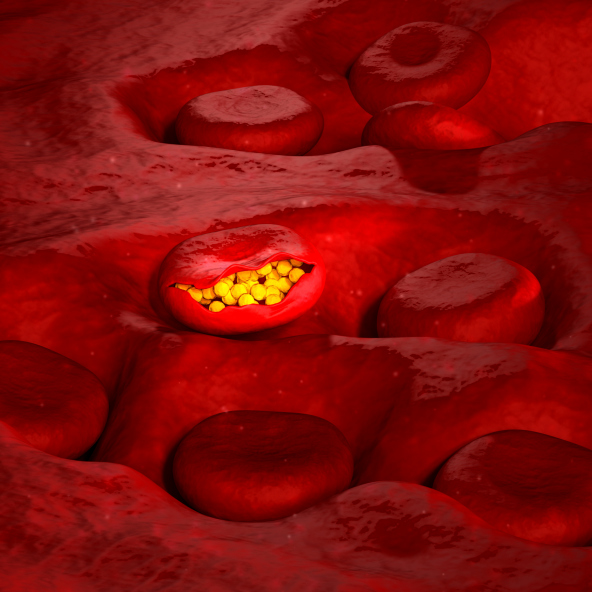
Faculty Member, Public Health at American Public University
Malaria is a preventable infectious disease, but the repertoire of drugs used to treat malaria infections is diminishing as the parasites become resistant to current treatments. A vaccine to prevent malaria is considered the holy grail of malaria eradication. So, why is there no vaccine available?
Malaria, one of the oldest diseases known to man, is a deadly parasitic disease spread through a mosquito bite. Once inside the human body, the parasite invades liver cells to produce high numbers of parasites which then go on to live in red blood cells. It is estimated that there are over 200 million cases of malaria each year worldwide that result in an estimated 600,000 deaths, most of which are children under the age of five in sub-Saharan Africa.
There are five species of Plasmodium parasites that cause human malaria. Each parasite differs in its biology, the severity of disease it causes, and the biology of the host. The most deadly form is Plasmodium falciparum; 90% of all cases are found in sub-Saharan Africa. Conversely, the highest cause of morbidity worldwide is Plasmodium vivax.
Even within these closely related species the parasite uses different ways to invade host cells and to cause disease. In addition, Plasmodium parasites have many different techniques for evading the host immune system. Together, these aspects make vaccine development very complex.
There have been and continue to be many preclinical candidates for malaria vaccine development; however, only one vaccine has made it to Phase III clinical trials. The inception of the RTS,S vaccine occurred over 30 years ago and today it is the front runner for the first licensed vaccine to prevent malaria. The vaccine contains antigens against a parasite surface protein, circumsporozoite protein (CSP) and hepatitis B virus surface protein. CSP allows the parasite to bind to host receptors and enter into the host liver cells where it can reproduce in large numbers (Coppi et al., 2011).
By blocking the ability of the parasite to bind and invade host liver cells, this vaccine can prevent disease. The hepatitis B portion is dual in purpose in that it acts as a stimulant to the immune system for the malaria protein and also immunizes against hepatitis B, another deadly infectious disease.
In Phase III trials, African infants and children were given the vaccine and followed for an 18 month period to see if there was a reduction of clinical or severe malaria (Targett, G, 2014). The results of the trials have shown this vaccine to reduce both the burden and severity of disease in children.
The 8,923 children who received the vaccine were less likely to contract clinical and severe malaria; however, the efficacy of the vaccine was low, 46 percent for clinical malaria and less than 34 percent for severe malaria. The vaccine demonstrated less efficacy when given to 6,537 infants with only a 27 percent protective level for clinical malaria and no significant protection against severe malaria. For comparison, commonly used vaccines in the U.S. such as the MMR and HPV are between 90 and 100 percent efficacious.
Although the efficacy is low, if available and used properly, the vaccine can save thousands of lives. Even with the promise of the first licensed malaria vaccine, continued research into the biology of this complex parasite will lead to better prevention and treatment. Basic biology of the parasite is still vastly unknown despite over a century of study. As we have seen with the RTS,S vaccine, vaccine development can take decades to progress from inception to production. Hopefully, the knowledge of the basic biology of the parasite gained today will lead to new treatments for the future.
References
Coppi, A., Natarajan, R., Pradel, G., Bennett, B.L., James, E.R., Roggero, M.A., Corradin, G., Persson, C., Tewari, R., Sinnis, P. 2011. The malaria circumsporozoite protein has two functional domains, each with distinct roles as sporozoites journey from mosquito to mammalian host. J Exp Med. 208(2):341-56. doi: 10.1084/jem.20101488.
Targett, G. 2014. Phase 3 trial with the RTS,S/AS01 malaria vaccine shows protection against clinical and severe malaria in infants and children in Africa. Evid Based Med. Epub ahead of print. doi: 10.1136/ebmed-2014-110089.
About the Author
Jennifer Sedillo is an Associate Professor in the Public Health program at American Public University. She recently received her doctorate from the University of South Florida where she studied the molecular biology of Plasmodium falciparum for 6 years. She has worked with colleagues across the globe and attended international conferences on the subject of malaria.

Comments are closed.